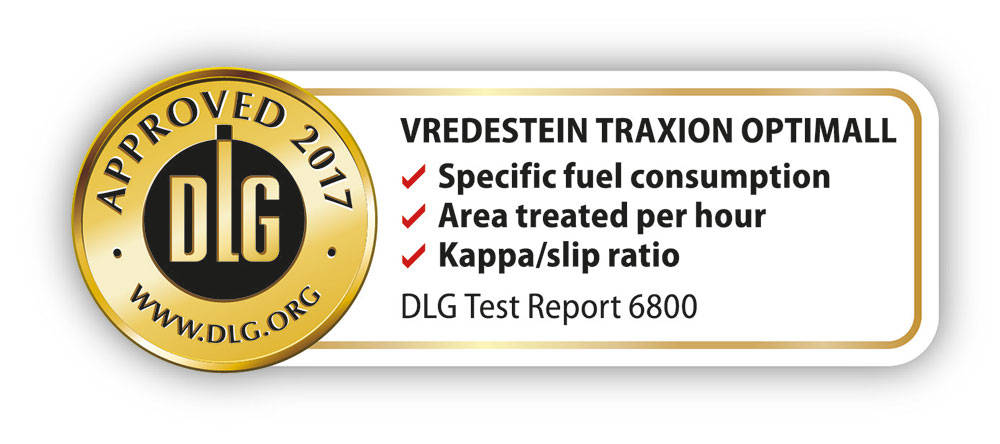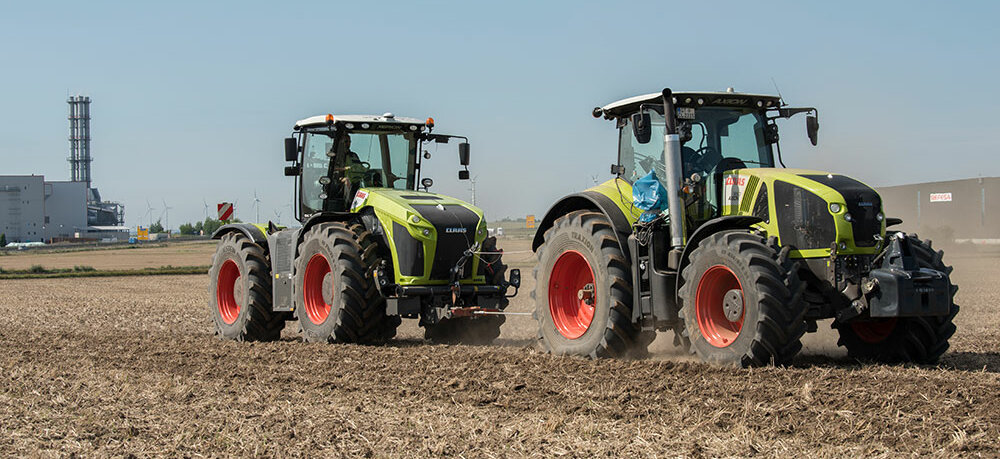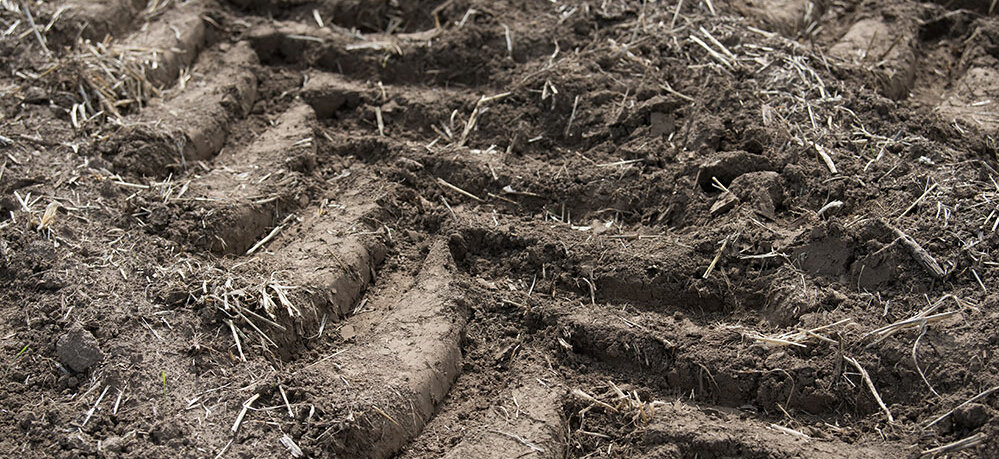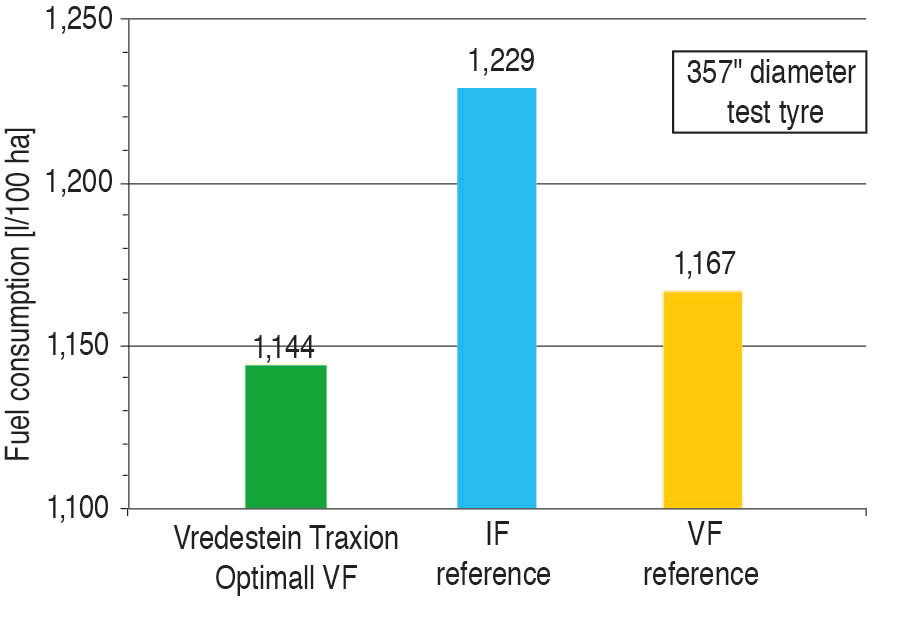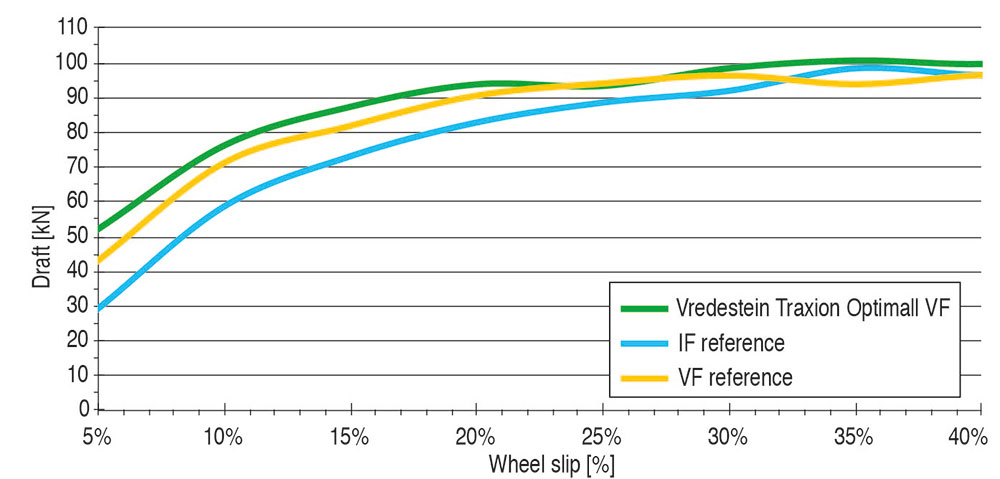Boosting performance
by Niels Conradi
With the launch of the Traxion Optimall tyre, Vredestein has extended its product range to include a further model with a ‘Very High Flexion’ (VF) carcass. The tyre was subjected to a DLG test to verify the extra efficiency derived from VF technology.
For many years now, agriculture has been undergoing a continuous process of consolidation that has led to farmers us-ing ever bigger and higher-powered machines. Although the number of farms is shrinking, the land under cultivation is not, which leaves fewer farmers farming more acres, harvesting higher yields and travelling longer distances between farmyard and field. As time and production pressures increase, manufacturers have focused on developing more efficient machines, making them bigger, heavier and more powerful.
Tyres have to tick more and more boxes
As tractors become more powerful, bigger and (much) heavier, tyre manufacturers are obliged to keep pace with these changes. While a heavier deadweight has relatively little impact on the machine’s road performance, it does have an enormous effect on soil compaction. In the field, a conventional standard tyre will cause massive compaction due to the higher inflation pressure that is required despite the same wheel load. This is the context in which the so-called IF and VF tyres were developed a number of years ago. IF stands for ‘Improved Flexion’ and VF for ‘Very High Flexion’, which rep-resent a further upgrade from ‘High Flexion’ technology.
Improving traction
In simple terms, the new technology uses thinner plies but more of them to make up the carcass which, as a result, becomes more flexible whilst retaining its stability. This greater flexibil-ity allows drivers to reduce the tyre pressure by up to 20% in IF tyres and by up to 40% in VF tyres while still managing the same wheel load. A lower tyre pressure translates into a larger contact area. This in turn reduces the pressure the machine puts on the ground and consequently the level of compaction. Furthermore, it improves traction in difficult and wet terrain as the lugs mesh more effectively with the soil. Alternatively, it is possible to increase the tyre loads by up to 20% and 40% over a standard tyre while air pressure and contact area stay the same.
Comparing tyre performances in the field
To assess the performance of the Traxion Optimall tyres, a set of them was tested to determine their performance in com-parison with IF and VF tyres from a competitor. The tyres that were subjected to the test were 650/65 R34 and 600/70 R34 on the front axle (referenced to VF) and 710/75 R42 on the rear axle of a CVT Claas Axion 950 C-Matic. The draft load was simulated by a CVT Claas Xerion 4000 which act-ed as the braking tractor. It was coupled to the pulling tractor by a steel rope with an integral dynamometer to measure the draft. The actual forward speed was measured by a Peiseler wheel that was mounted on the pulling tractor. This infor-mation along with wheel speed and rolling circumference was used to determine the level of wheel slip. The energy effi-ciency was determined by a volumetric meter on the pulling tractor. The test was carried out in two stages: In the first test cycle, the testers measured fuel consumption while the pulling tractor was travelling at a constant speed while the braking tractor was applying a constant load on the pulling tractor. This load was derived from data of real loads applied by a culti-vator to a tractor in regular straw incorporation. In the second cycle, the testers recorded the draft and wheel slip curves in soil conditions that are detailed in Graph 2. These measurements were carried out by operating the pulling tractor at a set ground speed and by continuously increasing the load by the braking tractor until wheel slip was 40%.
Results and summary
In the first test cycle, in which the constant draft requirement was about 70kN, the specific fuel consumption was approx. 70kN. It was clear that the Vredestein Traxion Optimall reduces fuel consumption by comparison with the IF tyre, yet in addition, the Vredestein tyre achieved better consumption rates also over the direct VF competitor. This sug-gests less wheel slip and consequently a better ha/hr performance. The same applies to draft and wheel slip. The curves on the graph show that the Vredestein Traxion Optimal produced the best results in all tests. One reason for this is that the Vredestein tyre produced the largest effective contact area at the set pressures. The Traxion Optimall from Vredestein scored many good marks in the DLG test, including the highest accolade of ‘Clearly better than standard products’.



